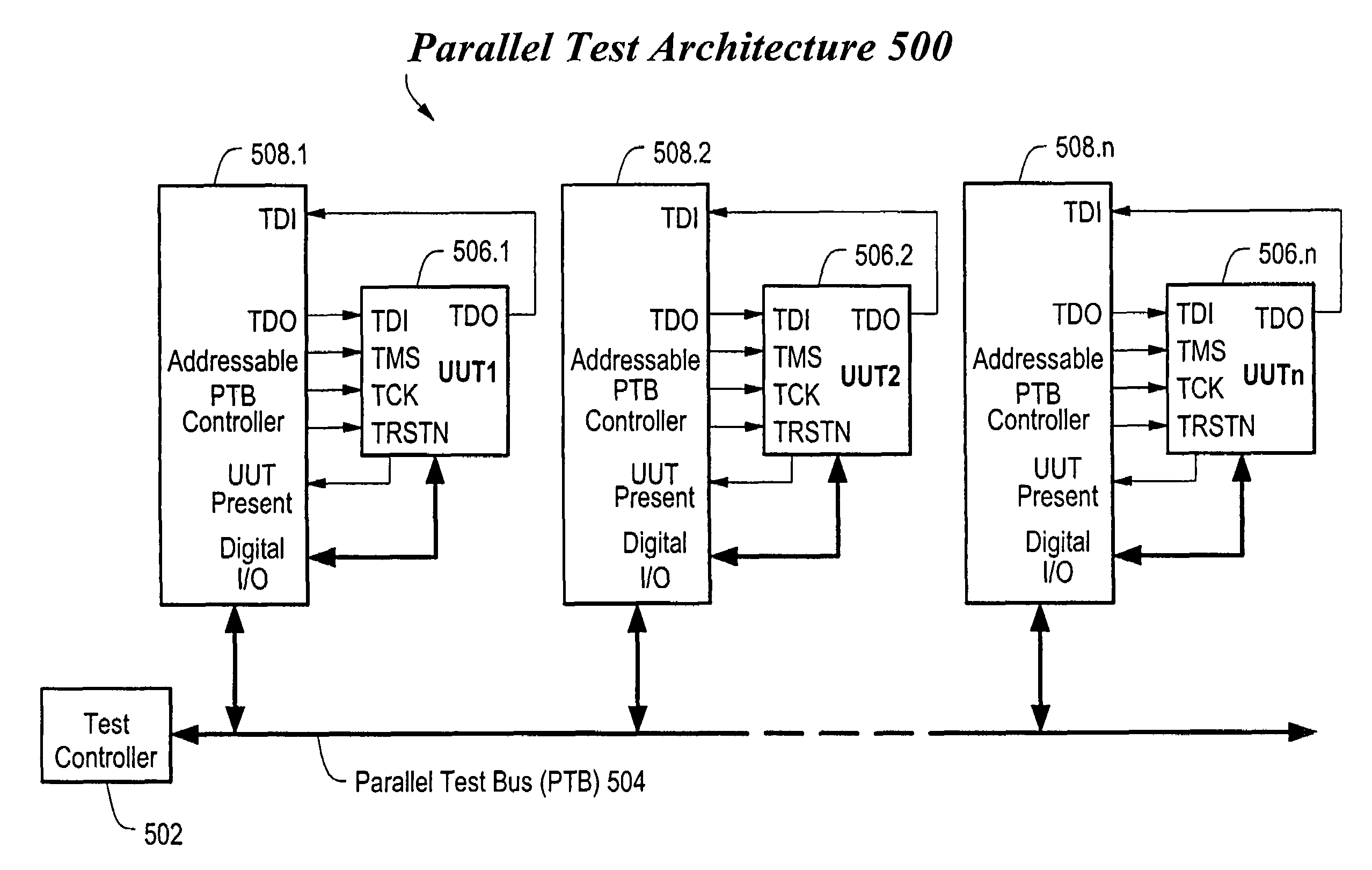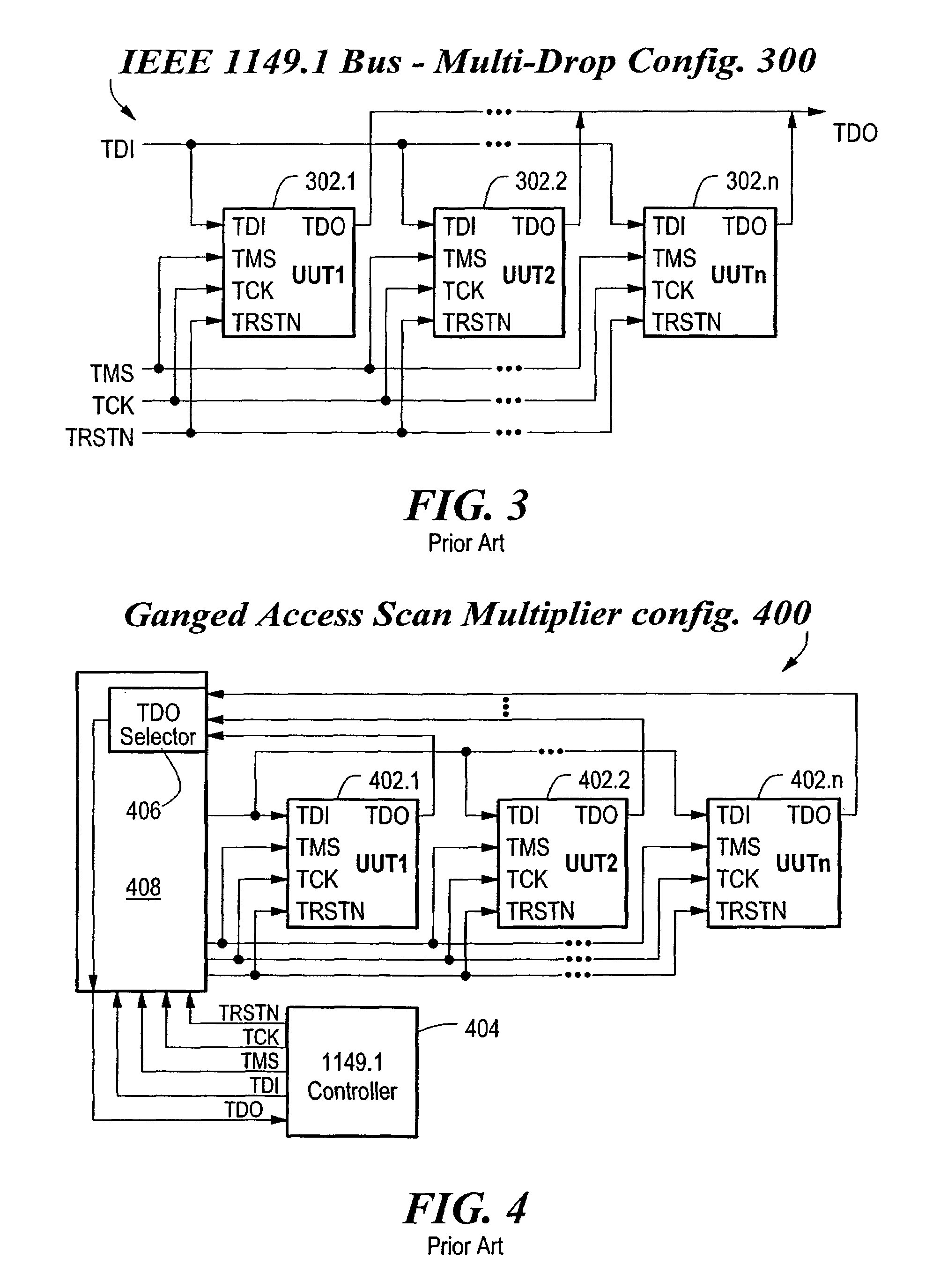Method and apparatus for optimized parallel testing and access of electronic circuits
a technology of parallel testing and access, applied in the field of scan-based testing of integrated circuits, printed circuit boards, systems, etc., can solve the problems of limited ate testing to a single uut, and the scalability of traditional ate is often impractical
- Summary
- Abstract
- Description
- Claims
- Application Information
AI Technical Summary
Benefits of technology
Problems solved by technology
Method used
Image
Examples
Embodiment Construction
[0046]U.S. Provisional Patent Application No. 60 / 303,052 filed Jul. 5, 2001 is incorporated herein by reference.
[0047]FIG. 5 depicts an illustrative embodiment of a Parallel Test Architecture (PTA) 500, in accordance with the present invention. In the illustrated embodiment, a test controller 502 is connected to a Parallel Test Bus (PTB) 504. For example, the test controller 502 may be either a separate external test controller or an embedded master controller, e.g., embedded with the system including Units Under Test (UUTs) 506.1–506.n. The test controller 502 is configured to communicate over the PTB 504 using the protocol of the PTA 500, which is described below. In this illustrated embodiment, the UUTs 506.1–506.n are connected to the PTB 504 via respective addressable PTB Controller circuits 508.1–508.n. Further, the PTA 500 may have from 1-n UUTs connected to the PTB 504. Any suitable number of like UUTs may then be accessed in parallel for testing and / or debugging purposes, o...
PUM
 Login to View More
Login to View More Abstract
Description
Claims
Application Information
 Login to View More
Login to View More - R&D
- Intellectual Property
- Life Sciences
- Materials
- Tech Scout
- Unparalleled Data Quality
- Higher Quality Content
- 60% Fewer Hallucinations
Browse by: Latest US Patents, China's latest patents, Technical Efficacy Thesaurus, Application Domain, Technology Topic, Popular Technical Reports.
© 2025 PatSnap. All rights reserved.Legal|Privacy policy|Modern Slavery Act Transparency Statement|Sitemap|About US| Contact US: help@patsnap.com



